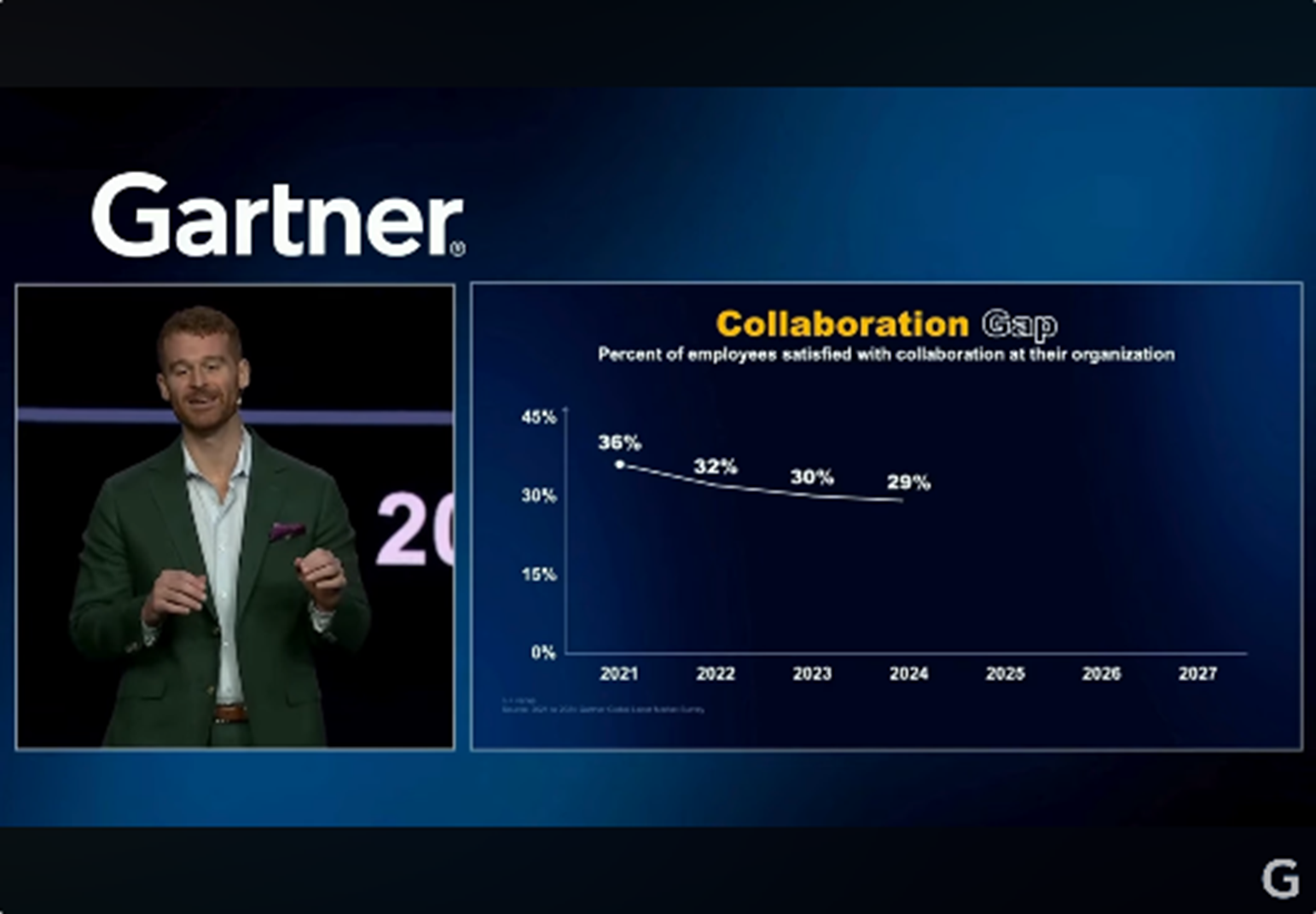Why Collaboration Feels Harder — And What Managers Can Actually Do About It
If collaboration feels harder lately, you're not imagining it. Gartner’s 2024 HR Symposium confirmed what many of us have sensed: despite more tools, collaboration is regressing — especially in hybrid and geo-distributed teams.
According to Gartner, employee satisfaction with collaboration has dropped from 36% to 29% in just three years. That's not just a dip in workplace sentiment — it's a red flag.

Why? Because when collaboration breaks down:
- Productivity drops
- Trust erodes
- Retention suffers
But here’s the part most organizations miss:
Collaboration isn’t magic. It’s not something you “hope happens.” It’s a skill. A structure. A rhythm. And it can be measured and improved — if managers are equipped to lead it.
Collaboration Is a Leadership Muscle
Too often, we assume team collaboration will emerge naturally. But like trust or feedback, it requires active design and intentional practice. Especially in distributed teams, collaboration needs:
- Clarity on who’s doing what
- Shared expectations and ways of working
- Tools and rituals that support transparency — not just communication
Middle managers are best positioned to build this structure. But they often lack support, time, and data.
This Is Why We Built Work2gether AI
Work2gether AI helps managers lead more connected, collaborative teams — step by step.
Through structured team collaboration diagnostics, we help surface what's working and what’s not. And through real-time, context-aware coaching, managers get actionable next steps they can apply immediately — no theory, just traction.
Collaboration can’t be left to chance. But it also shouldn’t be left entirely to you.
You already have the influence. We help you focus it.
👉 See how Work2gether AI makes collaboration measurable →
Image credit: Gartner HR Symposium 2024 Keynote Gartner source